Image Credit: Trent Bell
Image Credit: Trent Bell Modular houses under construction in Claremont, N.H., at Preferred Building Systems. Factory built houses offer greater precision, less waste and lower costs than site-built housing.
Image Credit: Phil Kaplan A crane sets a modular home component into place. Houses can be assembled and tight to the weather in a single day. This BrightBuilt home is being set in Wells, Maine.
Image Credit: Phil Kaplan These two prefabricated homes designed by Kaplan Thompson Architects are located on Peaks Island, Maine.
In the Northeast, there is a proud history of the craftsman, the homebuilder, the DIY hero and heroine. They work with sturdy tools, with local materials, with real wood. They brave the mean winters, cut each stick with caution, are frugal with lumber. They measure twice, and cut once. They have done this the same way over many years and the product is consistent, steady, exactly the same as it would have been, had it been built in 1953.
There’s only one problem. We live in a very different world than we did in 1953.
The lumber is more scarce, the tools more costly to run, and although the winters probably aren’t meaner, climate change has certainly made the weather more volatile. With skyrocketing fuel costs, our grandparents’ myth of the porous house as good house no longer holds water.
What happens if we bring these craftsmen inside to work, if we remove the gloves from their chilled, numb hands as they are trying to cut that 2×6 to a precise 8’-2 5/16” length, trying to get that sloping valley rafter just right – the first time? Well, what happens is things get done better. Turns out they might not mind either.
This is all well and good. So then why are we not more typically building our houses indoors, like every single other high-quality product in the world?
Demand for prefabs is expected to go up
According to an industry report from 2013, as the housing market and general economy recover, demand for prefabricated housing is expected to rise. Despite the promise of some reduction in construction costs, these products have had limited market penetration, in part because of consumers’ familiarity with traditional construction practices, or in the case of manufactured housing, some stigma attached to the product itself.
But this certainly wasn’t always the case. Consider the Sears Kit Homes of the 1920s, where homes were exactingly cut, preassembled and taken apart only to be put back together on site in a quality-assured, consistent and cost-predictable way. The efficiency of the system led to it becoming a very cost effective solution, and somewhere along the way, cost eventually trumped quality in our various building booms from the ’60s through the aughts. But this wasn’t a flaw inherent to the system itself.
Take a trip to one of our longest standing, local modular factories, Keiser Homes in Oxford, Maine, and what you see inside may surprise you.
It’s that same proud carpenter and his ilk, working inside, with real wood and high-quality materials under ideal working conditions. Some of the results may be more accurate cuts, less backbreaking lifting, significantly more airtight construction, less waste, higher efficiency, and greater oversight. These are real, high-quality homes these guys are building. They just move.
And not only do they still usually cost less, but are inherently more environmentally friendly as well.
Adding up the advantages
Some of the most significant productivity findings from prefabrication and modularization users include the following:
- Project schedules are decreased — by four weeks or more.
- Project budgets are decreased — by 6% or more.
- Construction site waste is decreased — by 5% or more.
- CO2 emissions are reduced — by 43% or more. (On average, conventional construction results in 14.3 months and 98.9 metric tons of CO2 emissions while modular construction takes only 6.03 months and results in 56.3 metric tons of CO2.)
And although these are large-scale industry findings, they actually feel low to some of us who have been working directly in this industry. Other proponents like Blu Homes claim 50 percent to 75 percent less waste with their modular homes versus the equivalent site-built home, through precision cutting and storage capacity for bulk ordering.
A study from the American Institute of Architects has found that up to 40 percent of the nation’s solid waste in landfills is building material, and according to Sustainable Sources, 8,000 pounds of waste are typically thrown into the landfill during the construction of a 2,000-square-foot home. (Yes, I know that’s not you; you’re smarter than that. But this is a big ship we have to turn.)
We now know that the interest is “green building” has more than doubled — from $54 billion to $120 billion — from 2011 to what’s projected for 2015. According to the latest study by The National Association of Home Builders, the majority “of firms building new single family homes report that they are doing more than 15% of their projects green,” and this number holds for new multifamily construction as well.
“Greater consumer interest in green homes has contributed to the ongoing growth, leading us to anticipate that by 2016, the green single family housing market alone will represent approximately 26% to 33% of the market, translating to an $80 billion to $101 billion opportunity based on current forecasts,” says Harvey Bernstein, vice president, Industry Insights and Alliances for McGraw Hill Construction.
So now that the demand for high-performance building we’ve all been waiting for is finally here, how do we keep up? Building faster sure sounds like a good idea, right?
Our move to modular housing
About six years ago, our firm, Kaplan Thompson Architects, made a decision to do no design work that did not have lower energy consumption as a primary goal. It was a definitive move that made us feel good, but there were a few problems with it. Namely, that it had the potential to run in direct opposition to another goal of ours: providing attainable design to clients with more modest means. Plus, if builders were tasked with being cheaper, they usually had difficulty pairing this objective with creating a higher performance building shell as well.
Soon after KTA set this goal, Keiser Homes contacted us about teaming up to marry our skills. They believed better-designed, affordable, net zero energy homes — homes that produce as much energy as they consume annually — had real potential within their customer base. Our clients were telling us the same thing but to that point, we had no predictable way of providing accurate pricing. So we created our first “Modular Zero” homes together, which has evolved into our BrightBuilt Home line. This new line, branded after our very first net zero energy project, the also prefabricated BrightBuilt Barn, has allowed us to serve the demographic for whom a completely energy-independent home was previously unattainable.
And we’re certainly not the only ones working hard on this, nor were we the first. Preferred Building Systems in New Hampshire incorporates energy efficiency into all of their modular homes, and dedicates a portion of its factory floor for explaining building science to their clients through mockups and demonstrations.
Bensonwood is pursuing panelized high performance with its Unity Homes line. Renowned Texas architects, Lake/Flato, are doing similar things with their striking Porch House line. And Chris Corson’s ambitious EcoCor is kicking things up to Passive House levels with their panelization efforts. It’s important to note that sometimes costs decrease, but not always.
Bensonwood’s charismatic leader, Tedd Benson, is seeing the scale of this movement, live. He says, “We expect the growth to happen in big strides, not just one consumer at a time. We are in serious negotiations and conversations with 11 developer prospects.”
Unity has signed on with developers for “a first phase DD agreement that has 240 hundred home sites.” And they’re working with “another prospect who’s doing about 50-60 per year, and a few others with 20-50 homes planned.” Benson’s company is just another harbinger of this trend. Lake/Flato Principal Bill Aylor reports similar interest, which has been increasing steadily and rapidly after receiving their 2011 Builder’s Choice Project of the Year Award for the Porch House concept. They now have projects as far north as New York, with serious interest from across the country.
Looking at the European model
According to an industry report, U.S. demand for prefabricated housing is expected “to expand 15 percent annually through 2017” to about 135,000 units per year, a pretty serious increase from the previous five years.
If the other reports on “green building” are true — that about a third of these are will be the kind of homes us NESEA types will be proud of and that most of these address real energy concerns, not just greenwashing — then we’ve got a serious influx on our hands that our current industry can’t handle without the skill and building science knowledge our tribe brings to the table.
Currently, more than two-thirds of new single-family houses in Sweden are prefabricated. Approximately 14 percent of houses in Germany are prefabricated, many of which meet the Passivhaus standard. In 2011, about 0.03 percent of homes in the United States that were built in factories.
I could be wrong, but it sure seems like these guys overseas are just smarter about these things than we are.
AIA 2030’s Ed Mazria estimates that about 60 percent of our housing stock will be replaced within the next 15 years, about 900 billion square feet of our built environment. And as building codes change, the level of required performance will simply have to rise. This just means that building higher performing homes must go hand in hand with the need for speed. And there’s plenty of work for those of us who are already doing the right thing.
For architects, this emerging but far from experimental means of building, needs to be reevaluated for what it is rather than what is isn’t.
With these reliable and reproducible systems ensuring certain aspects of buildability and performance, we can spend more of our efforts — and our clients’ fees — on designing what’s visible, which we love to do. A bonus opportunity that high-performance off-site can provide is the chance to be a more proficient — and prolific — designer. Still, we can’t get lazy. Just like with choosing a window, we need to be aware of a home’s specifications, limitations, context, and performance. And we’d never expect to build a window, piece-by-piece, on site.
Perhaps it’s time to think of the whole-house system in the same manner. Select the appropriate system for its use and setting and have it delivered, intact, to its site, ready for “installation.” (Want to see how it works? Here’s a video showing the process.) If we rightfully scoff at the idea of assembling a home’s individual components piece-by-piece, why do we still do so with the home itself? That’s just crazy talk. Crazy is so 1953.
Phil Kaplan is one half of GBA’s podcasting team at the Green Architects’ Lounge. He is also an award-winning architect whose Portland, Maine, firm, Kaplan Thompson Architects, is committed to designing only vibrant, healthy, and low-energy buildings. This blog was originally posted by the Northeast Sustainable Energy Association in time for its BuildingEnergy conference and is republished here with permission.
Weekly Newsletter
Get building science and energy efficiency advice, plus special offers, in your inbox.

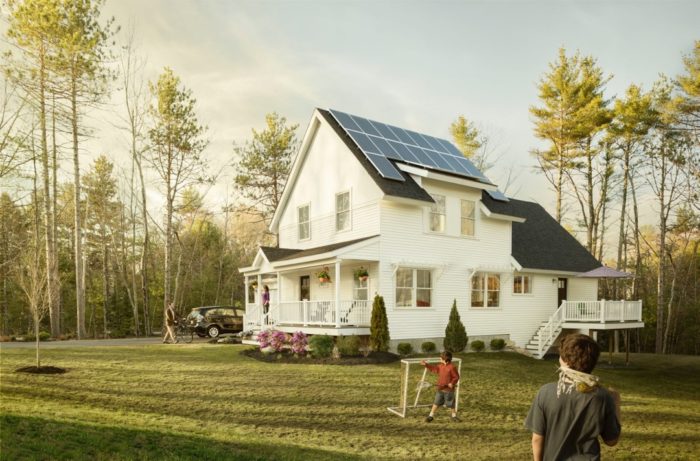




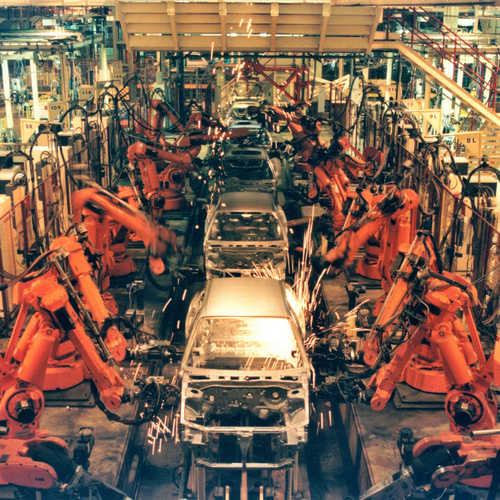
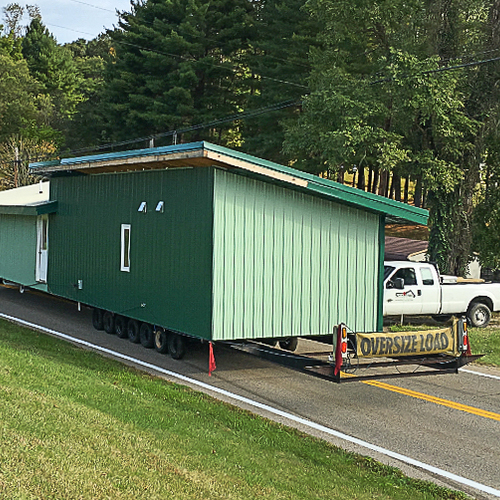
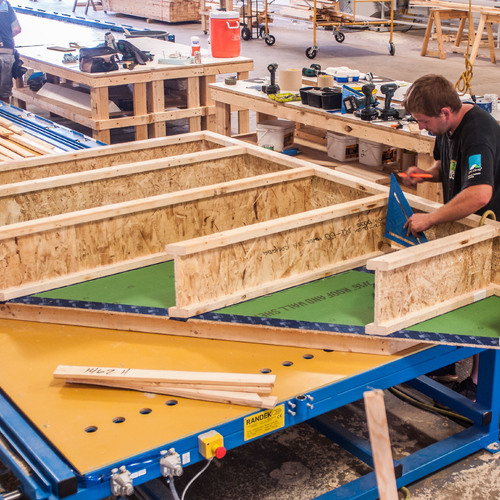
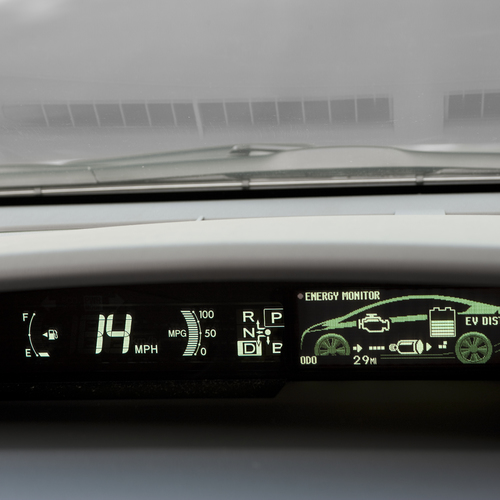






6 Comments
Cool Article
The two houses in the one picture, just looks like home. The kids bicycles, exposed rafter tails, etc.
What craftsmen wants to work inside?
For as long as I can remember prefab homes have been the next big thing. Promises of cost savings and more a controlled work environments were going to change the way building was done.
Frankly, I don't know a single "craftsmen" who would want to work in that controlled environment. Despite harsh outdoor conditons in the Northeast in both winter and summer, I think working outside is one of those "intangibles" that actually keep good craftsmen in this field.
I have had two employees who have worked for prefab/modular builders, and their first hand experience tells quite a different story than the fairy tale story told above.
Here is a shorthand of their experiences with prefab....
-lots of extra lumber, engineered wood, steel needed in prefab because the "things" have to be picked up moved, and picked up again.
-lack of oversight from inspecters. If you are running a prefab company and have various full time inspectors on hand for framing, plumbing, electrical, etc...how critical is an inspector going to be when his or her livelihood pretty much depends on the company you are working for building more homes?
-Factory work doesn't attract "craftsmen" is attracts low skill production workers, often drug addicts or convicts.
What Craftsmen...
Kye-
Some of your points are certainly valid. But in what I've seen, conditions vary dramatically from factory to factory. Blanket judgments over the industry are not sufficient.
We have had to become aware of the weight of a high-performance house, something that was never before on our radar. But steel is something they/we really try to avoid. Rigidity vs. weight is a frequent battle, particularly with more modern structures. This should be on the designer's head. Long spans are expensive and less practical for modular construction.
Also, we hire 3rd party inspectors for the reasons you state above.
Production cost savings
The arguments for modular home construction are familiar and cogent, as Kye notes we've heard them for many years. Though I'm generally up with useful new technologies there's still enough Luddite in me that I still cling to the notion of site-built houses as pretty much the last and only consumer product that's still mostly made one at a time using local skills right in front of our eyes, village blacksmith style. I value that as I value our Farmer's Market, but that doesn't stop me buying produce from far afield when it makes economic and environmental sense. We could grow bananas in North Carolina but the cost of heating those huge greenhouse would be absurd. Likewise if the economics of prefab production truly added up I'd probably shed a little tear and go along with it. 6% production cost savings is a pretty big number and I don't know a production builder/developer who would sniff at that. If the cost savings are real why are they not all over this? Why after so many decades of development are we still not seeing modular in the US mass market? Please don't tell me market resistance. The market, as ever, wants volume, volume and more volume at the lowest possible price.
Footnote:
Not all prefab is modular. I have seen panelized framing entering the production market locally and have even used it myself on a single custom home some years ago. The advantages were not enough to turn me into a convert at the time, but I could see that changing. I doubt I'll ever design a modular home though as the design constraints are not such a good fit for the values on which I've built my practice.
Re: Footnote
James, your comments about design restraints with modular are only somewhat true. You'd be surprised at what can be pre-built and shipped, including angles and curves, especially when you open up to all prefab methods and not just modular. It's just that it gets cost-neutral (or worse) pretty quickly. If there's only an element or two of a mostly rectilinear design that has a little spark, a factory-built option is likely still worth exploring.
Log in or create an account to post a comment.
Sign up Log in